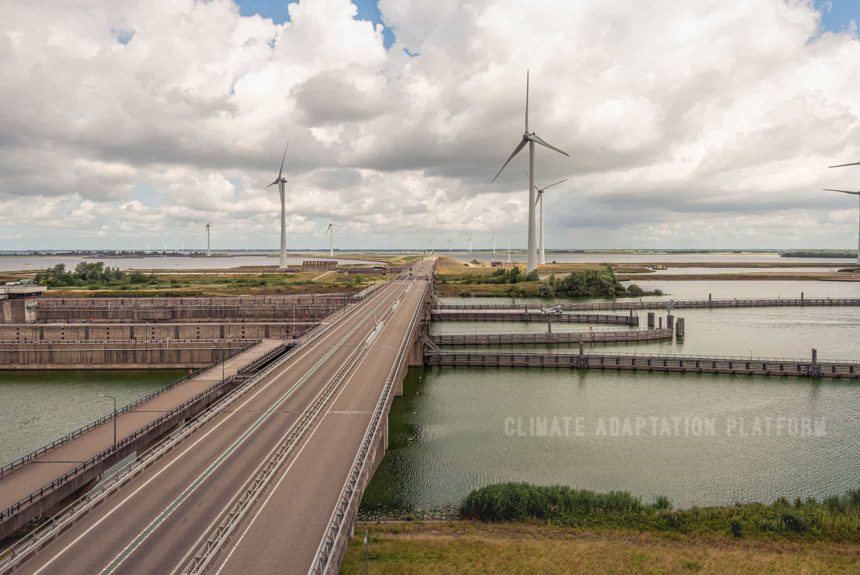Infrastructure contributes significantly to GHG emissions for its association with energy, buildings, and transport.
These emissions originate from various stages of the infrastructure lifecycle:
- emission embodied in infrastructure construction materials,
- the operation of the assets, and finally,
- the use of equipment required for its maintenance and eventual decommissioning.
Increased emission has resulted in the acceleration of climate change and the frequency of extreme weather associated with it.
A report by UNOPS, UNEP, and the University of Oxford, ‘Infrastructure for climate action’ shows that infrastructure accounts for 79% of all GHG emissions and 88% of all adaptation cost the majority of which will need to be spent on the water sector for hazard protection against floods, sea-level rise and other climate impacts, including nature-based solutions.
Released on October 21, ahead of the COP26, the report calls for radical change in infrastructure planning, delivery, and management to achieve critical climate and development targets. It urges governments to treat infrastructure as a priority sector for climate action that will require unified planning to tackle emissions from infrastructure.
Inger Andersen, Executive Director UNEP, says, “As we seek to bridge the infrastructure gap and improve the quality of life of people everywhere, it is critical that we invest in sustainable infrastructure that adapts to future uncertain climate conditions; contributes to the decarbonization of the economy; protects biodiversity and minimizes pollution. Sustainable infrastructure is the only way we can ensure that people, nature, and the environment thrive together.”
Also, speaking about the report, UN Under-Secretary-General and UNOPS Executive Director Grete Faremo said, “Our world is facing a climate emergency, with changes that are unprecedented, intensifying and, in some cases, irreversible. There is still time to act, but we need to do this urgently.”
Pointing to infrastructure’s role in climate change, he adds:
“This report highlights that radical changes to how we approach infrastructure are needed to stop the worst effects of climate change. It is ultimately crucial that we get this right as the infrastructure decisions made today will determine the quality of our common future.”
Professor Jim Hall, Professor of Climate and Environmental Risk University of Oxford, has this to say, “The central question is not whether we need infrastructure, but how it can be provided in ways that are sustainable, resilient, and compatible with a net-zero future.”
Infrastructure’s contribution to climate change also presents massive climate adaptation and mitigation opportunities. Incorporating these into infrastructure planning, construction, operation, and end-of-life can offer climate-compatible and climate-resilient infrastructures.
When done well, these climate actions will not only reduce emissions but will support the 2030 Agenda for Sustainable Development Goals (SDG) geared towards the most vulnerable countries and populations and realize the Paris Agreement.
The report presents six climate-compatible infrastructures and initiatives from the following countries covering the energy, transport, water, solid waste, digital communication, and building sectors.
- Chile – Accelerating investment in efficient and renewable district energy systems
- Ghana – Enhancing resilience of its national infrastructure- road, rail, airport, and ports.
- Sri Lanka – Working with nature to protect its population from floods through improved flood-control infrastructure, raising awareness, and capacity building.
- Yemen – Adopting environment-friendly waste management practices.
- Honduras – Establishing a reliable data centre and incorporating ‘green’ design into its building.
- Palau – The construction and rehabilitation of their infrastructure facilities utilized energy-efficient lighting and natural and locally sourced construction materials.
Click the link to read the entire report:
Source Citation:
Thacker S, Adshead D, Fantini C, Palmer R, Ghosal R, Adeoti T, Morgan G, Stratton-Short S. 2021. Infrastructure for climate action. UNOPS, Copenhagen, Denmark.
New report reveals how infrastructure defines our climate. (2021 October 12). UN Environmental Programme. Retrieved from https://www.unep.org/news-and-stories/press-release/new-report-reveals-how-infrastructure-defines-our-climate



Leave a Reply